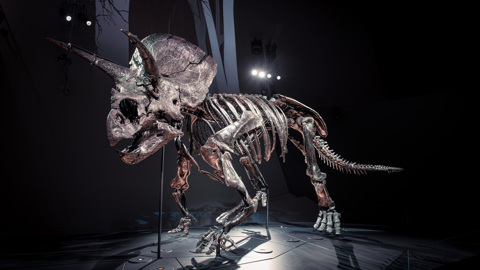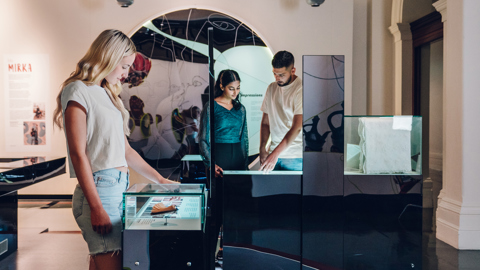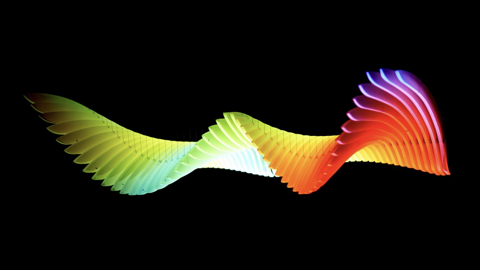Tanner Mills, Auto Tracking Spotlight
Transcript
The Auto Tracking Spotlight uses thermal detection to autonomously detect, track and illuminate people. Tanner identifies a need for a more precise lighting solution in situations such as taking out the bins at night or even to spot and follow burglars, where a traditional fixed light might waste energy through constant, but unnecessary, illumination. Project criteria included ease of use (both to operate and manoeuvre), accuracy (avoiding ‘false positives’) and to achieve a ‘clean’ and simple aesthetic.
The Auto Tracking Spotlight consists of a grey drum-shaped PLA shell mounted atop a generic black tripod, in the same way a camera would be mounted on a tripod. Affixed to the top of the shell is an LED encased in a saddle-shaped hold that, when triggered, projects a horizontal white beam of light. As demonstrated by the short video that forms part of the project’s portfolio, the shell that support the light rotates clockwise and anticlockwise to track a person’s movement. When the person moves beyond the detection radius of the device, the shell swivels back to its starting position. The motion appears as though made of a series of individual movements that track, rather than anticipate, the target. If the target moves continuously, the device’s motion takes on a smoother path.
The spotlight’s activation and movement is governed by a thermal camera, also housed in the shell, set to trigger when the camera detects a heat of 17 degrees and programmed to track this heat source within its set radius. The device is turned on and off with a simple switch that emits a red glow. Beneath the switch are two detachable battery holders to fit 9v batteries. Aligned to the aesthetic aim, these battery holders are rimmed in red plastic to mirror the red light emitted from the switch. In total, the batteries will power the LED for a total of 2 hours. The total weight of the device is 464.94 grams. The device (minus tripod) stands at a discrete 115mm high.
The project had a budget of $250. Tanner’s 50-page project portfolio uses text, diagrams and photographs to chart the development of the device: including the handwritten yellow sticky-notes, sketches and flowcharts from the early ideation and mind mapping stages, the 3D printing of the drum-shaped shell (which took 19 hours and 26 minutes), the electronics and the coding, which utilised a complex heat mass tracking algorithm, called an image moment. It details the tools, machine and processes as well as a risk assessment.
The materials used in this design as listed on the exhibitor label include: Freenove control board V4, AMG8833 IR thermal camera, servo motor, switch, LED, relay, PLA 3D printed components, 9v batteries.






